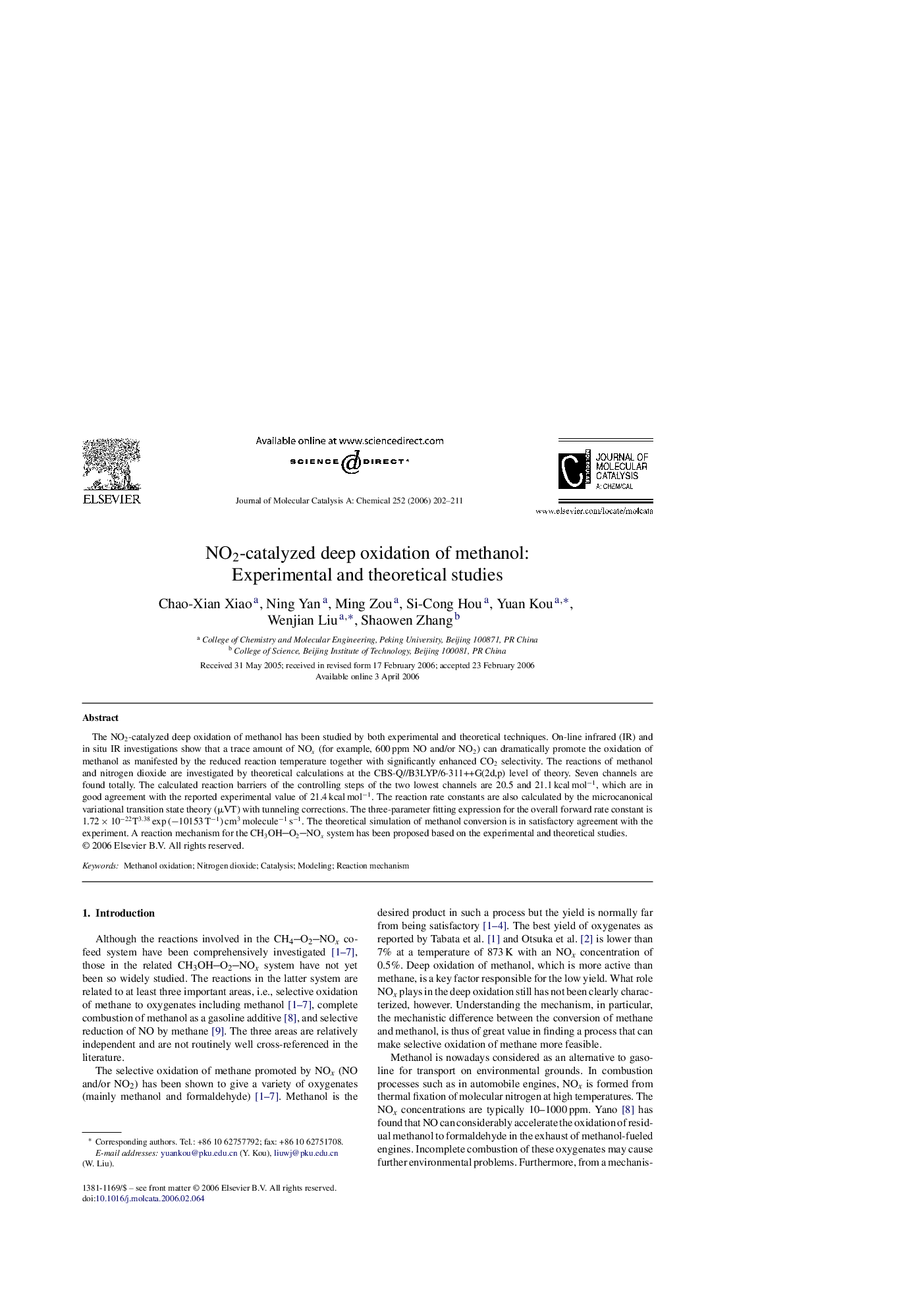| Article ID | Journal | Published Year | Pages | File Type |
|---|---|---|---|---|
| 68991 | Journal of Molecular Catalysis A: Chemical | 2006 | 10 Pages |
The NO2-catalyzed deep oxidation of methanol has been studied by both experimental and theoretical techniques. On-line infrared (IR) and in situ IR investigations show that a trace amount of NOx (for example, 600 ppm NO and/or NO2) can dramatically promote the oxidation of methanol as manifested by the reduced reaction temperature together with significantly enhanced CO2 selectivity. The reactions of methanol and nitrogen dioxide are investigated by theoretical calculations at the CBS-Q//B3LYP/6-311++G(2d,p) level of theory. Seven channels are found totally. The calculated reaction barriers of the controlling steps of the two lowest channels are 20.5 and 21.1 kcal mol−1, which are in good agreement with the reported experimental value of 21.4 kcal mol−1. The reaction rate constants are also calculated by the microcanonical variational transition state theory (μVT) with tunneling corrections. The three-parameter fitting expression for the overall forward rate constant is 1.72 × 10−22T3.38 exp (−10153 T−1) cm3 molecule−1 s−1. The theoretical simulation of methanol conversion is in satisfactory agreement with the experiment. A reaction mechanism for the CH3OHO2NOx system has been proposed based on the experimental and theoretical studies.
Graphical abstractOn-line infrared (IR) and in situ IR investigations show that a trace amount of NOx (for example, 600 ppm NO and/or NO2) can dramatically promote the oxidation of methanol. NO2 was found to be the active catalyst during this process by both experiments and theoretical calculations. Two most favorite pathways were found, yielding CH2OH and cis-HONO as the products. Figure optionsDownload full-size imageDownload high-quality image (199 K)Download as PowerPoint slide
